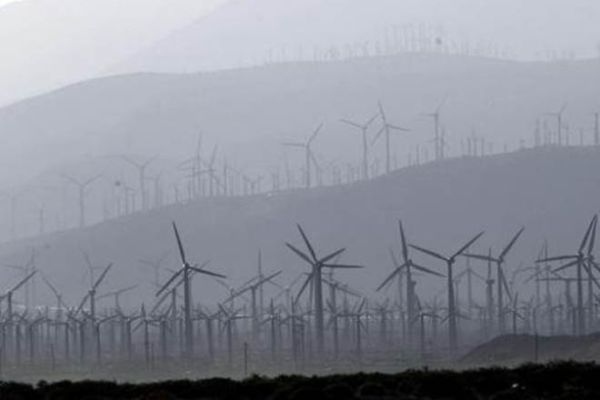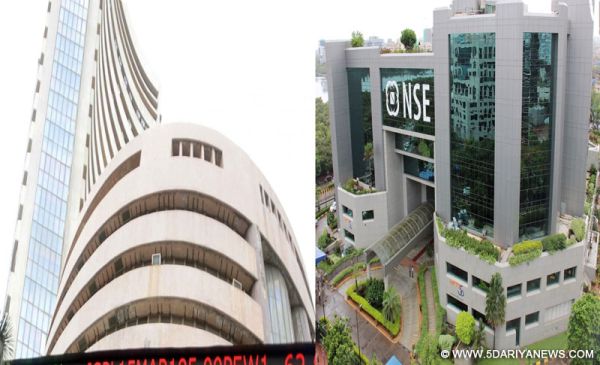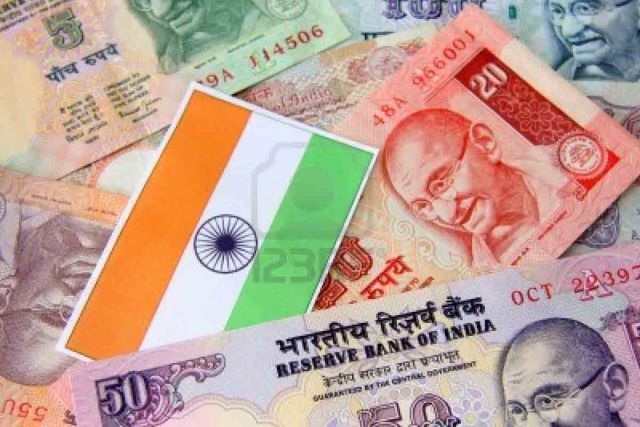
by Editor | May 25, 2021 | Opinions, Politics
 By Amulya Ganguli,
By Amulya Ganguli,
Just as Narendra Modi mocked the Congress on the rural employment scheme by saying that it was a living example — “jeeta jagta smarak” — of the party’s failures, the parliamentary approval of a 10 per cent quota for the economically weaker sections under the government’s aegis underlined its inadequacies on the economic front.
Had the economy been booming and there were jobs aplenty, there would have been no need for providing the crutches of reservations for another group in addition to the existing provisions for the scheduled castes (Dalits), scheduled tribes (Adivasis) and the Other Backward Castes (OBCs).
It was the perceived discontent over the absence of employment opportunities which made the government identify an additional 10 per cent of the population for affirmative action.
It may have felt that the initiative was all the more necessary because the popular angst over a moribund economy had found expression in the Bharatiya Janata Party’s (BJP) recent electoral defeats in as many as five states — Rajasthan, Madhya Pradesh, Chhattisgarh, Telangana and Mizoram.
The BJP’s earlier failure to cross the halfway mark in Karnataka must have also been seen by the party along with the latest setbacks as a warning sign in the months before the next general election.
Moreover, the defeats in the heartland states were attributed to the disquiet among the middle and upper classes over not only the BJP’s economic policies, but its social stance as well in the context of its hesitancy to effectively counter the judicial relook at the law on atrocities affecting the Dalits and Adivasis, which annoyed the middle and upper classes/castes.
The latest set of quotas, therefore, are aimed both to assure the new beneficiaries about jobs and education and to reaffirm the party’s long-established brahmin-bania bias.
The twin objectives are unlikely to have an easy run. For one, by exceeding the judicial stipulation about a 50 per cent limit on reservations by introducing the new quotas, the government courts the risk of running into legal difficulties.
For another, in its attempt to woo the middle and upper castes, the BJP may open the gates for the quota warriors to create mayhem with various demands. Already, an OBC leader has called for doubling the quota for his community from 27 per cent to 54 to bring it closer to his estimate of the actual number of OBCs in the country.
For a third, the BJP’s pro-upper caste tilt can alienate the Dalits, Adivasis and the OBCs to the electoral advantage of the party’s opponents, especially in the Hindi heartland.
At the same time, the few “forwards” in these parties of the backward castes can move towards the BJP, compounding the confusion created by the reappearance of the caste-based “Mandal politics” of the 1990s.
But how will this divisive brand of caste mobilisation play out in the new era of economic aspirations? In the 1990s, the promise of assured jobs was deemed enough for the caste-based outfits to reap electoral benefits, sidelining the Congress and compelling the BJP to turn to the temple issue to keep its Hindu flock together.
But, now, the provision of quotas will mean little in the absence of jobs, as Union Minister for Road Transport and Highways Nitin Gadkari recently told the Marathis demanding reservations.
The BJP will have to contend, therefore, not only with the legal hurdle relating to the quantum of quotas, but also the charge of making promises in a vacuum, as it were, since the expectations of the unemployed are unlikely to be fulfilled.
But these are not the only criticisms which it will face. No less strident, especially among the middle and upper classes, will be the charge that the BJP is turning its back on the economic reforms unlike the period immediately before the last general election and for a few years afterwards when it was seen to be in the forefront of the private sector-led rejuvenation of the economy.
Now that Union Minister for Food and Public Distribution Ram Vilas Paswan has called for bringing the private sector within the ambit of the quota system, the feeling may grow that the BJP will have no option but to follow this regressive advice since the government and the public sector will not be able to provide enough jobs for the needy.
Since the Congress, too, had called for reservations in the private sector in 2003 and has not formally dissociated itself from the party’s 1955 pledge to usher in a “socialistic pattern of society”, it can be assumed that the Indian political class will not hesitate to move backwards towards a licence-permit-control raj.
The fact that the new law on quotas was passed almost unanimously in the two House of Parliament with only a few courageous MPs showing that they still live in the 21st century is evidence that the political class across the spectrum not only believes in a controlled economy, but also has no time for meritocracy.
To them, all that matters is cynically favouring their respective caste- and community-based vote banks through quotas and the strangulation of a free market since investments will dry up in such a society.
(Amulya Ganguli is a political analyst. The views expressed are personal. He can be reached at amulyaganguli@gmail.com)
—IANS

by Editor | May 25, 2021 | Opinions
 By Taponeel Mukherjee,
By Taponeel Mukherjee,
The renewable energy sector in India has been dynamic in the last two decades, and especially over the last few years, with ambitious targets. That said, recent bottlenecks the sector has faced suggest that businesses in the sector require to focus on creating “economic moats” to enable the next phase of growth.
The term “economic moat”, as defined by Morningstar, is “a structural business characteristic that allows a firm to generate excess economic returns for an extended period”. It is vital that firms in the renewable energy sector that want to be profitable and deliver investment returns in the long run continually reassess their business models from a financial viability perspective.
The first pillar of creating an “economic moat” is through efficient scale. Building moats through this pillar are already in the works in the Indian renewable energy sector. In a highly price-competitive market where tariff rates have nosedived, consolidation through mergers and acquisitions to create operational efficiencies is a step in the right direction.
The second pillar is “cost advantages”. While selling a commoditised product, “cost advantages” will accrue through the ability of firms to create efficient businesses and display “good stewardship of capital” to access relatively inexpensive capital. This “cost advantage” through robust operations that translates into a strong balance sheet and allows companies to access capital at lower rates will be a significant driver of long-term strategic advantage in the renewable energy market.
Additionally, “cost advantage”, not just through access to low-cost capital but also through prudent balance sheet management, will be a significant driver in creating “economic moats”. Prudent balance sheet management here refers to capital structure decisions on the mix of debt and equity, as well as decisions regarding tenor and nature of debt utilised to generate funding.
The ability of the businesses to anticipate interest rate cycles and the prudence for a long-term outlook is vital to creating the “cost advantage”. For instance, with interest rates at the relatively low-end of the range and global interest rates creeping higher, the decision to borrow paying fixed interest rates as opposed to floating interest rates can create structural advantages for business as interest rates start inching higher. Such “cost advantages” that both allow access to low-cost capital and assist in a well-hedged capital structure is an area that businesses most focus on.
The third pillar is the “network effect”. This is a strategy that traditional energy companies have used extensively. In common parlance, “network effect” can be looked at as vertical integration. The ability to create a business that not only engages in production but also in transmission and distribution has helped create sustainable “economic moats” for several of the large energy companies.
In India, we have seen some renewable energy developers consider investing in transmission assets. This is the correct thing to do. Creating “network effect” through adding transmission businesses to their kitty is complex but might be essential for renewable energy players to both create sustainable “economic moats” and expedite renewable energy usage.
A significant issue that renewable energy developers have faced in the past is the lack of transmission asset infrastructure to evacuate energy from production sites. As mentioned, an integrated transmission and production business is far more complicated, but given the needs, large players will have to look at adding expertise and capacity to create the transmission infrastructure to push ahead with higher production capacity.
Apart from looking at transmission assets, they must also actively pursue opportunities in the energy storage space. While this area has received significant attention, going forward, as storage technology evolves and costs decline, the ability to create integrated energy storage and development businesses might separate the wheat from the chaff.
Significant variation in business models can be created through the integration of both centralised storage as well as eventually creating large platforms that enable decentralised storage at a consumer level. Businesses that will be able to both finance and operate successfully integrated storage businesses within the larger energy development platforms might end up being the long-run winners.
Renewable energy businesses in India have witnessed unprecedented growth in the last decade. Rapidly declining tariffs and substantial fund-raising by developers have been the hallmark of the industry. Going forward, business model innovation to create structural advantages will help it both tide over issues such as lack of transmission infrastructure as well as create sustainable economic models that can deliver long-term value for the rapidly growing energy consumer base.
(Taponeel Mukherjee heads Development Tracks, an infrastructure advisory firm. The views expressed are personal. He can be contacted him at taponeel.mukherjee@development-tracks.com or @Taponeel on Twitter)
—IANS

by Editor | May 25, 2021 | Economy, Markets, News
 By Ravi Dutta Mishra & Rohit Vaid,
By Ravi Dutta Mishra & Rohit Vaid,
Mumbai : Fears over a slowdown in global growth on the back of US-China trade tensions, along with domestic concerns on lower industrial production, spooked investors and led the key Indian equity indices to a negative weekly close.
Even a rebound on Friday triggered by signs of an ease in US-China trade tension as reports said that a US delegation will visit China next week to participate in trade talks failed to enthuse.
Index-wise, the S&P BSE Sensex lost 381.62 points, or 1.05 per cent, to close at 35,695.10, whereas the 50-share Nifty of the NSE declined by 132.55 points, or 1.22 per cent, to settle at 10,727.35.
In the just-concluded week, global markets witnessed volatile trade due to weak US economic data which added to fears of a global slowdown.
The fears over the global slowdown were again supplemented by data showing a contraction in China’s factory activity. Additionally a lowered financial forecast by tech major Apple subdued investor sentiments.
On the domestic front, data showing the Indian manufacturing activity expanded at a slower pace in December acted as a dampener.
“Back at home, the domestic market looked cautious driven by concerns about a global growth slowdown, amid news reports that the government is planning a massive farm relief package that may further worsen the fiscal health of the economy,” SMC Investments & Advisors CMD D.K. Aggarwal said.
Besides, the Indian markets were dented by an outflow of foreign funds, as FIIs sold shares worth over Rs 2,000 crore as against domestic institutional investors, who bought over Rs 500 crore worth of stocks, provisional data on BSE showed.
In contrast, the local currency strengthened by 43 paise to 69.72 against the US dollar from its previous week’s close of 70.15.
“The rupee closed the week stronger… which was a bit surprising on the back of crude moving up by 15 per cent in last week from lows of around $50,” said Sajal Gupta, Edelweiss Securities’ Head of Forex and Rates.
On sector-specific levels, PSU banks, realty and Bank Nifty led the gains this week on the indices, while auto, metal and energy indices dragged.
Stock-wise, the realty sector outperformed the benchmark indices during the volatile week, partly on the expectation that the GST Council at its January 10 meeting will slash tax rate on under-construction housing to 5 per cent from 12 per cent.
“The market breadth was negative in three out of the five trading sessions of the week. The top sectoral gainers for the week were the PSU Banks, realty and Bank Nifty indices. The top losers were the auto, metal and energy indices,” Deepak Jasani of HDFC Securities said.
The top gainers on the BSE and the NSE were Yes Bank which gained 4.38 per cent and Bharti Airtel which was up 2.02 per cent. Sun Pharma, Asian Paints and ICICI Bank gained in the range up to 2 per cent.
In contrast, export-oriented Mahindra & Mahindra lost heavily this week after lower than expected sales figures dragged its shares down 9.59 per cent.
Tata Steel lost 5.06 per cent followed by Hero MotoCorp, which slid by 4.40 per cent, and Maruti Suzuki which declined by 3.46 per cent.
(Ravi Dutta Mishra can be reached at ravidutta.m@ians.in and Rohit Vaid at rohit.v@ians.in)
—IANS

by Editor | May 25, 2021 | Economy, News, Opinions
 By Amit Kapoor,
By Amit Kapoor,
India is an elaborate mix of contradictions and complexities. It is rare to find other countries in the world that embrace such an extraordinary diversity of religions, a multitude of ethnic groups, a disparate assortment of languages, and a range of economic development levels within the society.
The contradictions can be seen in the outcomes of the economy that we see today as well. The country is a net importer of toothbrushes but is rapidly gaining an enviable competitive advantage in sending satellites into space.
These curious inconsistencies are a culmination of years of policy decisions that were akin to putting out one fire after another rather than based on strategic long-term development strategy. Indian economic history is full of such instances that have resulted in a situation where some parts of the economy perform exceptionally well while the rest lay in the dark. The origin of all present economic problems is commonly attributed to the adoption of the planned model of development soon after independence, which slowed economic activity under a complex web of quotas and licenses.
However, the idea that the state could plan to meet each and every demand and need of its citizen had quite a few takers in the post-War era, even if it might seem absurd today. It was not simply Nehru’s fascination with the idea of socialism that India went down that path as is often suggested. In fact, Nehru had invited the best and brightest economists of the time to India for insights on the viability of a planned economy.
I.G. Patel recalls in his memoir how a series of economists – Gunnar Myrdal, Ragnar Frisch, Jan Tinbergen, Oskar Lange and Richard Goodwin – came to India with a definite view that development could be plotted and planned till the last mile. The choice also does not seem out of place when seen in the context of the times. India had gained independence at a time when the socialist model was seemingly working in USSR while the capitalist world seemed to be crumbling under economic depression and wars.
The mistake, however, lay in persisting with the model even after its failures and inefficiencies became apparent. By the time of Nehru’s death in mid-1960s, the criticism of planned development were hard to miss. Gunnar Myrdal penned a telling account on the failures of development, Asian Drama, in which he remarked that “India’s promised social and economic revolution failed to materialise.”
The arguments of free marketeers led by Milton Friedman were also becoming dominant in the field of economics at the time. A few East Asian economies – mainly South Korea, Taiwan, Hong Kong and Singapore – began opening up after becoming disillusioned with the central planning model. They adopted a unique approach of state-led capitalism with a substantial export-oriented focus. Over the next few decades, these economies entered a period of sustained high-growth phase that popularly came to be known as “The East Asian miracle”. Therefore, India’s continued fascination with the status quo becomes hard to defend after Nehru’s death. Instead of evolving with the times, India became even more closed and tightly state-controlled under Indira Gandhi.
A spate of nationalisations beginning from banks to insurance to coal were undertaken during her tenure; sectors which are reeling from corruption and inefficiencies until date. Her shift towards the left was less due to ideological reasons as was the case with Nehru, but more due to sheer survival in the Congress party where she found herself competing for space with the old guard; most significantly, Morarji Desai. It helped her cause to portray herself as the preserver of her father’s legacy, even though some of the actions were aspects that even Nehru had not deemed fit to pursue.
India hardly made any policy shifts even when China began opening up its markets under Deng Xiaoping in the latter half of the 1970s. The inaction persisted despite the fact that between 1960 and 1990 at least a dozen committees were set up to examine almost every aspect of the control economy, each of which unfailingly came to the conclusion that the system of industrial licensing was at fault. But, radical steps like moving away from the socialist model could cost elections. So, the intent of chalking out a long-term strategy was generally missing.
Only incremental changes were made through the eighties when Indira Gandhi returned for her final stint in office with Rajiv Gandhi following along similar lines. Eventually, it was the disastrous balance of payments crisis of 1991 that allowed the Indian economy to shed the arcane system of licensing and controls. The travails of central planning were finally put to rest.
The biggest success story that the economy has experienced in the post-liberalisation period – that of the IT boom – has also been a matter of chance rather than intent. India had a huge pool of engineers due to the establishment of higher education institutions during Nehru’s time who also had an added advantage of being English-speaking. The combination proved attractive to the developed world and the rest is history.
It should be said that these are sweeping generalisations that have to be made for the purposes of brevity in a column. But they are hardly refutable. We have dealt with the issue in depth in our forthcoming book, The Age of Awakening. In more recent times, there have been instances that reflect a shift away from this history of inaction and short-termism. But the tendency to revert to the old ways is extraordinarily high. The recent political obsession with farm loan waivers before elections is a case in point. In times like these, it is necessary to look back at history so as to not repeat it.
(Amit Kapoor is chair, Institute for Competitiveness. The views expressed are personal. He can be contacted at amit.kapoor@competitiveness.in and tweets @kautiliya. Chirag Yadav, senior researcher, Institute for Competitiveness, has contributed to the article. Their book, The Age of Awakening, is out for pre-orders at https://amzn.to/2GAulnz)
—IANS

by Editor | May 25, 2021 | Opinions

Representational Image
By Kritika Shah,
Much frenzy has been created around India’s declining female labour force. In 2017, the International Labour Organisation (ILO) estimated this at 27.2 per cent, lower than its neighbours, including Bangladesh and Nepal.
However, contrasting low unemployment rates suggest that structure-agency issues are confining female employment and, subsequently, the Indian economy. It has been estimated that upwards of $700 billion can be added to the national income if the gender gap can be overcome by 2025.
Thus, in partnership with Southern Voice, Public Affairs Centre (PAC) is conducting a case study to understand the barriers and enablers to decent work for Indian women, culminating in a presentation at the UN High Level Political Forum 2019.
Thanks to India’s booming population of 1.4 billion, 65 per cent of which comprises the youth, it is home to a demographic dividend which can create substantial economic gains. However, without adequate policy instruments to leverage this advantage, youth unemployment will surge, causing a “demographic deficit” and increased dependency ratios. Against this background, this case study will examine the participation women in India’s workforce.
Given the lack of dependence on agriculture as a livelihood due to climate change and the informal nature of the job, it was hypothesised that women in the rural areas might be vulnerable to poor labour outcomes. Alternatively, due to improved access to formal job-related resources, it was hypothesised that women in urban areas are more likely to be a part of the workforce.
Seema, an engineer working in Bengaluru, can achieve improved labour outcomes due to access to public transportation, access to resources for household management, access to a network of experts who can help guide her career and access to financial security.
Alternatively, Bhagya, an agricultural labourer in Bhandara district (Maharashtra), probably faces a different reality: She has limited access to infrastructure to reach her workplace; she knows few people who work outside the primary sector; she has informal workplace systems, including no leaves; and since she is a daily wager, financial inclusion for Bhagya is limited.
Taking a deeper look, the districts with the highest female worker population rates were not surprising as they belonged to culturally matriarchal states such as Nagaland. It is estimated that upwards of 500 women per 1,000 are working in Nagaland’s districts.
However, it was found that districts with relatively high female workers had more than double the number of rural workers than urban workers. While there are 622 female workers for every 1,000 women in rural Zunheboto, the figure drops to 244 in urban Zunheboto, a third of the rural workforce size.
What’s more, none of the major urban epicentres of India was found to have female worker population rates that were above the 50th percentile of worker population rates. Major metropolises, including New Delhi (196 workers per 1,000), Mumbai (188 workers per 1,000) and Kolkata (179 workers per 1,000) had significantly lower female worker population rates, even lower than the national average.
Thus, Seema might not have it better than Bhagya after all. Urbanisation may not be creating conducive circumstances for female employment. Or perhaps aspects of rural socio-economics may be enabling women to work.
While external factors may still affect labour outcomes, there are deeper issues of agency embedded at various levels that are affecting Indian women and keeping them from employment. These issues may exist at the level of the household, community, state or nation.
By piecing together perspectives gained from the regionally diverse country, a more valid picture of India’s female labour economy from the perspectives of the average Indian woman, our Seemas and Bhagyas, will be architected. In this way, policy implementation and action can align to be more effective in actually generating impact at the grassroots level instead of correcting the gender gap in India’s workforce only at a superficial level.
(Kritika Shah is Programme Officer, Urbanisation and Development, at PAC. The views expressed are personal. She can be contacted at kritika@pacindia.org)
—IANS





